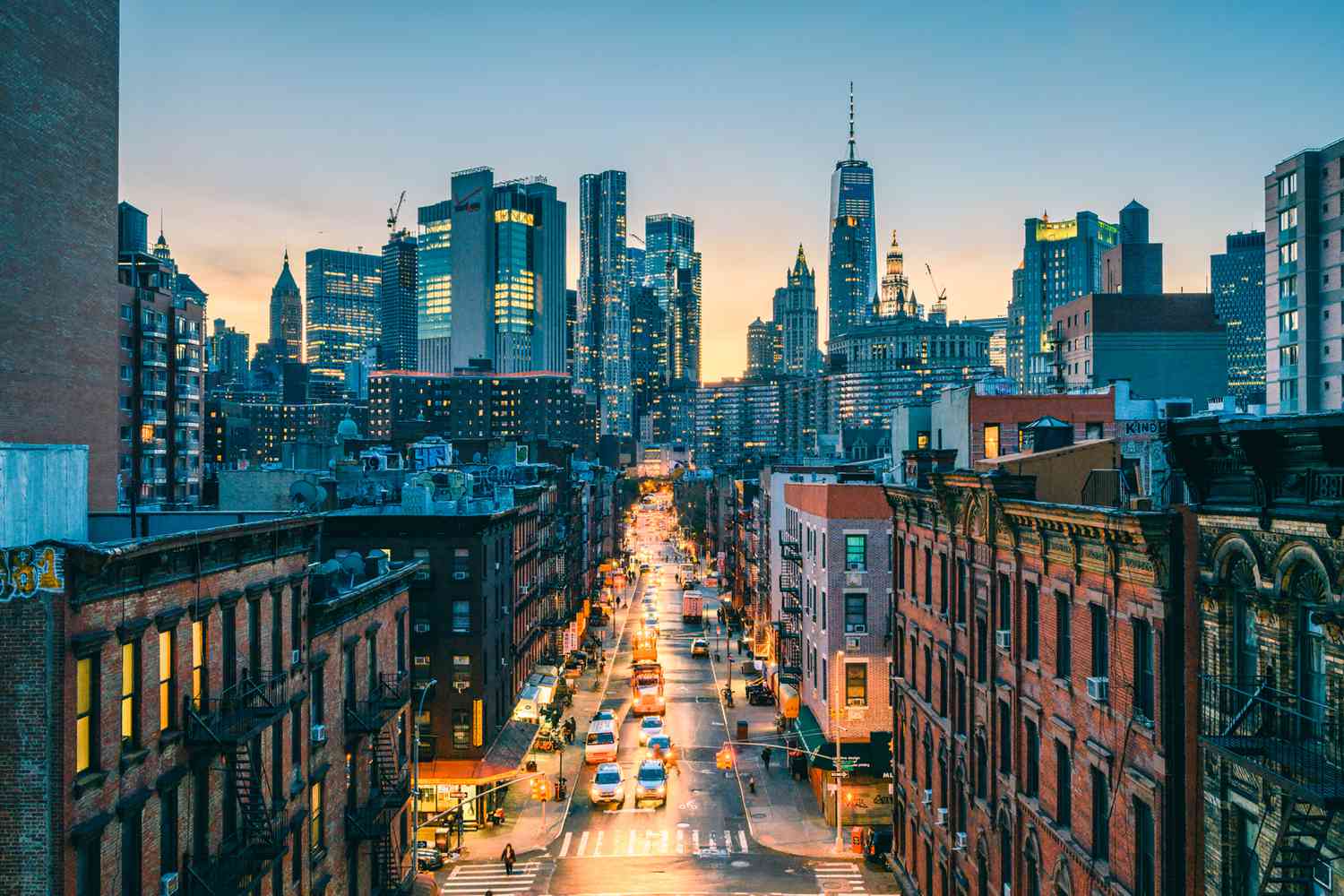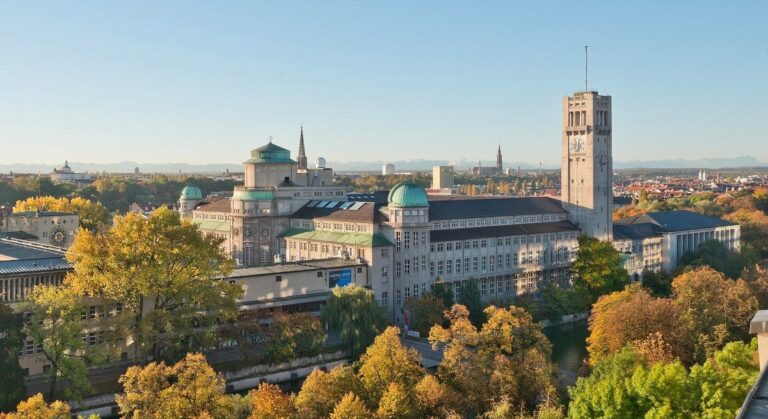Planning a move to the bustling city of New York? Congratulations on your exciting new adventure! Before diving headfirst into the vibrant streets of the Big Apple, it’s important to familiarize yourself with some essential tips to ensure a smooth transition.
From navigating the city’s transportation system to understanding the cost of living, there are a few crucial things to know before moving to NYC.
Table of Contents
Key Takeaways
- Purge unnecessary items before the move.
- Learn about loading and unloading options in NYC buildings.
- Familiarize yourself with parking regulations in the city.
- Be prepared for the higher cost of living in NYC.
- Explore the unique boroughs and neighborhoods of the city.
Understanding the Cost of Living in New York City
When considering a move to New York City, it’s crucial to understand the cost of living in the Big Apple. Living expenses, housing prices, and utility costs can significantly impact your budget. Let’s break down the key factors that contribute to the high cost of living in NYC.
Housing Prices
New York City is notorious for its high housing prices. Rent prices for a one-bedroom apartment in popular neighborhoods can average around $3,930 per month. This is a staggering 369% higher than the national average for housing costs.
Securing an affordable and suitable living space can be a challenge, so it’s essential to budget carefully and consider various neighborhoods to find the best fit for your lifestyle and budget.
Utility Costs
Alongside housing, utility costs in NYC can also put a dent in your wallet. For a 915-square-foot apartment, utilities such as electricity, heating, and water can average around $164.72 per month. It’s important to factor these costs into your budget to ensure you can comfortably cover your living expenses.
Transportation Expenses
In a city where public transportation is a way of life, it’s essential to include transportation expenses in your cost of living calculations. For example, a monthly transit pass for unlimited rides on the subway and buses costs $127.
This cost may vary depending on your commuting needs and distance traveled. Consider your daily travels and budget accordingly to avoid any unforeseen expenses.
Living in the heart of New York City comes with its perks, but also with a hefty price tag. Understanding the high cost of living is crucial in planning your move and budgeting effectively.
By accounting for housing prices, utility costs, and transportation expenses, you can ensure a smooth transition to NYC and set yourself up for success in the Big Apple.
| Expense | Average Cost |
|---|---|
| Housing (One-bedroom apartment) | $3,930 per month |
| Utilities (monthly) | $164.72 |
| Monthly Transit Pass | $127 |
These figures provide a general overview of the cost of living in New York City.
Keep in mind that costs can vary depending on factors such as location, apartment size, and personal preferences. It’s essential to research specific neighborhoods and consult the latest market trends to get a more accurate estimate of your living expenses in NYC.
Exploring New York City’s Boroughs and Neighborhoods
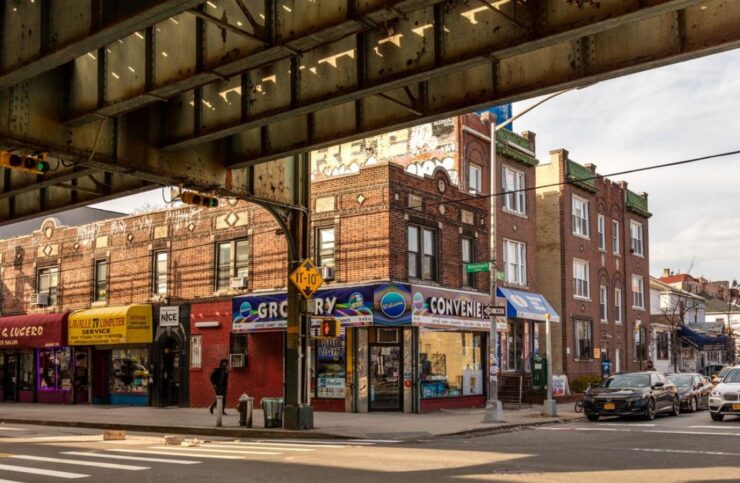
New York City, also known as the Big Apple, is a vibrant and diverse metropolis made up of five boroughs: Manhattan, Brooklyn, Queens, The Bronx, and Staten Island. Each borough has its own unique characteristics and offers a plethora of neighborhoods to explore.
In Manhattan, you’ll find popular neighborhoods such as Hell’s Kitchen, Murray Hill, Greenwich Village, and the Upper East Side. Hell’s Kitchen, known for its trendy restaurants and vibrant nightlife, is a must-visit for foodies and entertainment enthusiasts.
Murray Hill, on the other hand, offers a mix of residential and commercial spaces, making it a favorite among young professionals. For those seeking a bohemian atmosphere and art scene, Greenwich Village is the perfect destination. And the Upper East Side, with its elegant brownstones and proximity to Central Park, is synonymous with luxury and sophistication.
Brooklyn, with its trendy vibe and artistic community, is home to neighborhoods like Williamsburg, DUMBO, Park Slope, and Prospect Heights. Williamsburg, known for its hipster culture, boasts an array of trendy bars, restaurants, and artisanal shops.
DUMBO, short for Down Under the Manhattan Bridge Overpass, offers breathtaking views of the Manhattan skyline and is a hotspot for artists and creatives. Park Slope, known for its tree-lined streets and family-friendly atmosphere, is a top choice for those looking for a suburban feel within the city.
And Prospect Heights, with its proximity to the beautiful Prospect Park and the Brooklyn Museum, is a haven for nature lovers and art enthusiasts.
Queens, often referred to as the most diverse borough, has its fair share of popular neighborhoods. Astoria, known for its Greek heritage and vibrant food scene, is a melting pot of cultures and cuisines.
Willets Point, located near Citi Field, is the perfect neighborhood for sports enthusiasts. And Long Island City, just across the East River from Manhattan, offers stunning views of the city skyline and is home to numerous art galleries and cultural institutions.
Whether you’re exploring the bustling streets of Manhattan, immersing yourself in the eclectic vibe of Brooklyn, or discovering the vibrant neighborhoods of Queens, New York City’s boroughs offer a rich tapestry of experiences and endless opportunities for exploration.
New York has a wide range of neighborhoods, from the safest towns to some of the most dangerous neighborhoods in the US. Be sure to do thorough research before setting yourself on the journey.
Top Things to Do in New York City
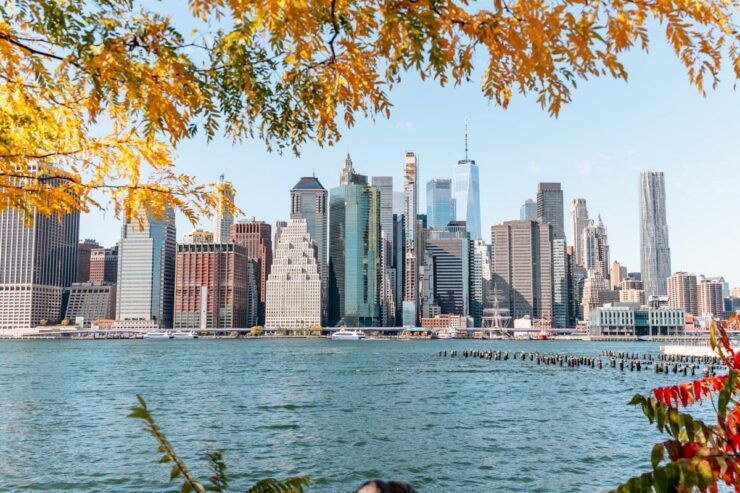
New York City is a vibrant metropolis with endless attractions to explore. Whether you’re a tourist or a local, here are some must-visit spots that capture the essence of NYC:
1. Metropolitan Museum of Art
Immerse yourself in the world of art and culture at the renowned Metropolitan Museum of Art. With its vast collection spanning over 5,000 years of history, this museum showcases masterpieces from around the globe.
2. Statue of Liberty and Ellis Island
Pay a visit to the iconic Statue of Liberty and Ellis Island, symbolizing freedom and opportunity. Take a ferry ride to Liberty Island and explore the museum, or hop over to Ellis Island and learn about immigration history in America.
3. The High Line and Central Park
Indulge in the beauty of nature by taking a leisurely walk on the elevated High Line, a former railway turned urban park. Afterwards, unwind in the heart of Manhattan at Central Park, where you can enjoy picnics, bike rides, and even boat rides in its iconic lakes.
4. Broadway Shows and Nightlife
Experience the electrifying energy of Broadway with its world-class shows and performances. From musicals to dramas, there’s something for everyone. After the show, explore the vibrant NYC nightlife scene, with a plethora of bars, comedy clubs, and music venues to choose from.
5. Museums and Art Galleries
NYC is a haven for art enthusiasts, with numerous museums and galleries showcasing a wide range of artistic styles and periods. From the modern masterpieces at the Museum of Modern Art (MoMA) to the thought-provoking exhibits at the Whitney Museum of American Art, there’s no shortage of artistic inspiration.
6. Outdoor Activities and Parks
Escape the bustling city streets and enjoy the great outdoors in New York City’s parks. Prospect Park in Brooklyn, Riverside Park along the Hudson River, and Brooklyn Bridge Park are just a few examples of green spaces where you can unwind, go for a jog, or have a picnic.
Whether you’re interested in art, history, nature, or nightlife, New York City has something to offer everyone. Don’t miss out on these top attractions that make the Big Apple a truly unique and captivating destination.
Navigating New York City’s Public Transportation
Public transportation is vital in NYC, with the MTA providing an extensive subway and bus system. Consider getting a monthly transit pass for unlimited rides.
Familiarize yourself with the subway system, which consists of eighteen lines and connects all five boroughs. Take advantage of the other transportation options like taxis, ride-sharing services, and ferries.
Getting Around with Ease
When it comes to getting around New York City, the subway system is the most convenient and efficient mode of transportation. With its extensive network of lines, you can easily navigate the city and reach your destination.
Whether you’re heading to work, exploring different neighborhoods, or visiting famous landmarks, the subway will take you there. As you venture into the subway, make sure to purchase a MetroCard, which is used to pay for your fare.
You can either load it with pay-per-ride value or purchase an unlimited ride pass for a specific duration, such as a week or a month. Opting for a monthly transit pass can save you money if you plan on using public transportation frequently.
While the subway is the backbone of NYC public transportation, there are other options available to supplement your travel needs. Taxis are a common sight in the city and provide a convenient door-to-door service.
Ride-sharing services like Uber and Lyft are also popular and offer a more affordable alternative to traditional taxis. If you’re looking for a scenic way to travel, consider taking a ferry.
NYC has several ferry routes that connect different boroughs and offer picturesque views of the city skyline and waterfront areas. It’s a fantastic way to explore NYC from a different perspective.
Driving Considerations
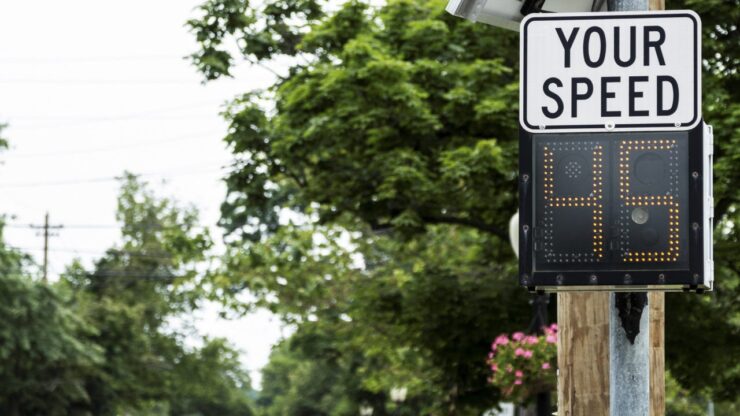
Driving in NYC can be challenging due to congested streets, limited parking, and heavy traffic. It’s important to familiarize yourself with street parking rules, parking garages, and the high cost of parking in the city.
If you do decide to bring a car, be prepared to navigate through crowded streets and face the possibility of traffic jams during peak times.
It’s advisable to use a GPS navigation system or a smartphone app to help you find the best routes and avoid heavily congested areas.
However, many residents in New York City rely solely on public transportation due to its convenience, reliability, and cost-effectiveness.
The subway system, combined with buses and other transportation options, can easily take you anywhere you need to go in the city. Embrace the NYC way of life and enjoy the benefits of its robust public transportation system.
Whether you’re commuting to work, exploring different neighborhoods, or discovering the city’s world-class attractions, NYC’s public transportation will undoubtedly help you get there.
Tips for Apartment Hunting in New York City
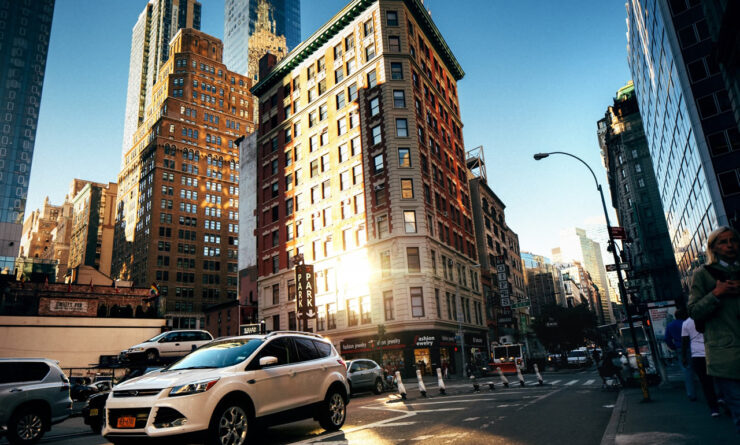
Apartment hunting in NYC can be an exciting yet challenging endeavor. With high demand and steep competition, it’s essential to be prepared and knowledgeable about the process. Here are some helpful tips to navigate the apartment rental journey in the Big Apple.
1. Be Prepared for Broker Fees
When searching for an apartment in NYC, it’s common to encounter broker fees. These fees can be around 15% of the annual rent and are typically paid by the tenant. It’s important to factor this additional cost into your budget and be prepared to pay it upon signing the lease.
2. Consider the Importance of Amenities
When evaluating potential apartments, consider the amenities that are most important to you. In-unit laundry, air conditioning, and private outdoor spaces can greatly enhance your living experience. Prioritize your needs and preferences to narrow down your options.
3. Familiarize Yourself with Different Apartment Types
New York City offers a variety of apartment types, each with its unique characteristics. Familiarize yourself with the different options, such as walk-ups, studios, lofts, and railroad style apartments.
Understanding the layout and features of each type will help you make informed decisions during your search.
4. Be Prepared for Extensive Paperwork and Deposits
The apartment rental process in NYC often requires extensive paperwork and deposits. Landlords will typically request documents such as proof of income, bank statements, and references. It’s crucial to have these documents ready and be prepared to provide them promptly to secure your desired apartment.
5. Research Neighborhoods and Pricing
Before apartment hunting, research different neighborhoods and their average rental prices. This will give you an idea of what to expect and help you narrow down your search. Consider factors such as proximity to public transportation, amenities, and safety when choosing a neighborhood.
6. Attend Open Houses and Schedule Viewings
Attending open houses and scheduling viewings is an excellent way to get a feel for different apartments and neighborhoods. Take the time to visit potential rentals in person, ask questions, and assess the overall condition and suitability of the property. This hands-on approach can greatly assist you in making an informed decision.
By following these tips and being proactive in your apartment search, you’ll increase your chances of finding the perfect place to call home in vibrant New York City.
Understanding the NYC Job Market and Economy
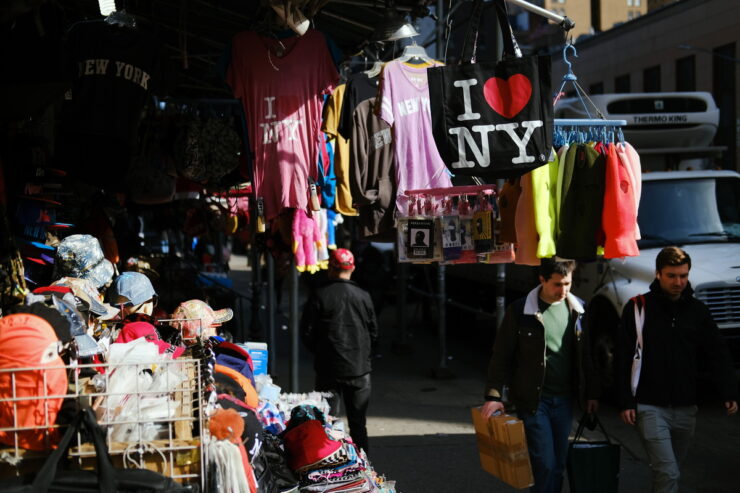
When considering a move to New York City, it’s crucial to understand the city’s job market and economy. NYC is home to a diverse range of industries, offering abundant employment opportunities for job seekers.
The city’s booming economy makes it a central hub for various sectors, including financial services, healthcare, professional and business services, retail, education, and entertainment. With such a wide array of industries, individuals from different professional backgrounds can explore and find their niche in NYC.
One of the key indicators of NYC’s economic strength is its Gross Domestic Product (GDP). In 2020, the GDP of New York state is projected to reach a staggering 1.5 trillion U.S. dollars, making it one of the largest and most influential economies in the world.
Whether you’re a seasoned professional or just starting your career, the vibrant job market in New York City offers endless possibilities for growth and success. Be prepared to tap into a thriving economy and explore a diverse range of employment opportunities as you plan your move to the Big Apple.
Top Industries in the NYC Job Market:
| Industry | Job Opportunities |
|---|---|
| Financial Services | Investment banking, asset management, finance, accounting |
| Healthcare | Hospitals, medical research, pharmaceuticals |
| Professional and Business Services | Consulting, legal services, advertising, marketing |
| Retail | Fashion, luxury goods, e-commerce, hospitality |
| Education | Higher education institutions, public schools, tutoring |
| Entertainment | Film, television, theater, music, arts |
As you embark on your journey to New York City, be sure to leverage the city’s thriving job market and explore the numerous employment opportunities available across various sectors. The dynamic NYC economy is ready to welcome your skills and expertise, offering a platform for professional growth and advancement.
Embracing New York City’s Unique Climate and Weather
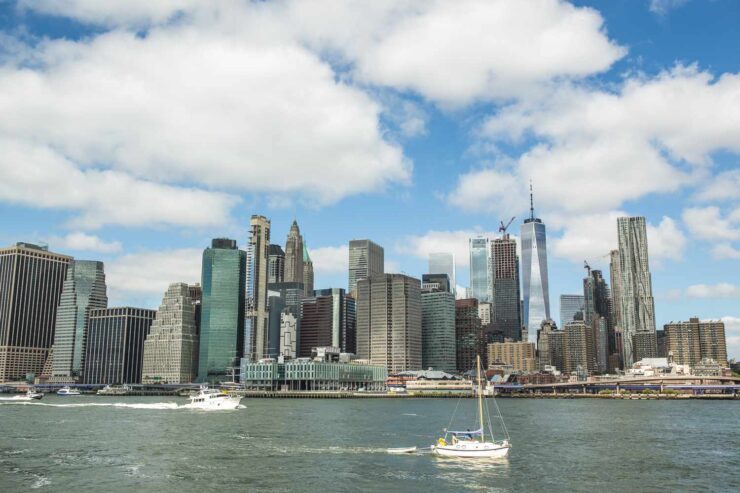
When it comes to weather, New York City offers a diverse range of conditions throughout the year. From hot and humid summers to snowy and windy winters, the city experiences it all. You can expect temperatures to vary from 28°F to 85°F, so it’s essential to be prepared for extreme temperatures and fluctuations in weather.
During the summer months, the combination of heat and humidity can be intense. To beat the heat, many apartments in NYC are equipped with window air conditioning units, providing relief when the temperatures soar. Soothing the scorching heat, these units are a must-have during this sweltering season.
“I always embrace the summertime in New York City by escaping to Central Park in the early mornings or evenings. It’s a great way to enjoy the beauty of the city while avoiding the heat.” – Sarah, NYC Resident
As winter arrives, snow and wind become common occurrences. To stay comfortable during this cold period, heating is typically provided through steam boilers in most apartments, ensuring a cozy living space. So, don’t forget to bundle up and keep warm during the winter months.
To navigate NYC’s varied climate, it’s crucial to stay informed about the weather forecast. Dress appropriately for the day’s weather and be prepared for sudden changes. Layering is key, allowing you to adjust your clothing and stay comfortable as temperatures fluctuate throughout the day.
Seasonal Temperatures in New York City
| Season | Average Temperature | Recommended Attire |
|---|---|---|
| Spring | 45°F to 65°F | Light jackets, long-sleeved shirts, and pants |
| Summer | 75°F to 85°F | T-shirts, shorts, dresses, and sandals |
| Fall | 55°F to 70°F | Light jackets, sweaters, and jeans |
| Winter | 28°F to 40°F | Heavy coats, hats, scarves, gloves, and boots |
As you embrace New York City’s unique climate and weather, remember to dress appropriately, stay informed, and make the most of each season’s offerings.
Discovering the World-Class Attractions in New York City
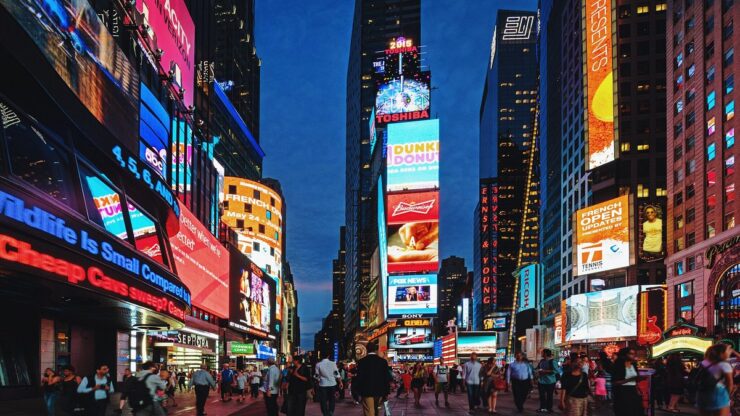
New York City is where you’ll find an abundance of world-class attractions that showcase the city’s vibrant culture and rich history. Whether you’re a first-time visitor or a seasoned local, these must-visit places in New York City will leave you in awe.
1. Broadway Shows
If you’re a fan of theater, catching a Broadway show is an absolute must. From classic musicals like “The Phantom of the Opera” to Tony Award-winning productions like “Hamilton,” the electrifying performances on Broadway will leave you spellbound.
2. Museums
Immerse yourself in art, history, and culture at the world-renowned museums in New York City. The Metropolitan Museum of Art houses an extensive collection spanning thousands of years, while the Museum of Modern Art (MoMA) showcases contemporary masterpieces. Explore these iconic institutions and expand your horizons.
3. Iconic Landmarks
No visit to New York City would be complete without seeing its famous landmarks. Admire the Statue of Liberty, an international symbol of freedom, and marvel at the architectural marvel that is the Empire State Building. These iconic sights epitomize the spirit of NYC.
4. Vibrant Nightlife
As the city that never sleeps, New York City offers a vibrant nightlife scene that caters to every taste. From live music performances at legendary venues like The Apollo Theater to side-splitting comedy shows at the Comedy Cellar, the city comes alive after dark.
5. Parks and Outdoor Spaces
Escape the hustle and bustle of the city by exploring its green spaces. Central Park, with its picturesque landscapes, offers a tranquil retreat amidst the urban jungle.
The High Line, a unique elevated park built on a historic freight line, provides stunning views of the cityscape. Prospect Park in Brooklyn is another must-visit, with its serene lakes and lush meadows.
Famous Landmarks in New York City
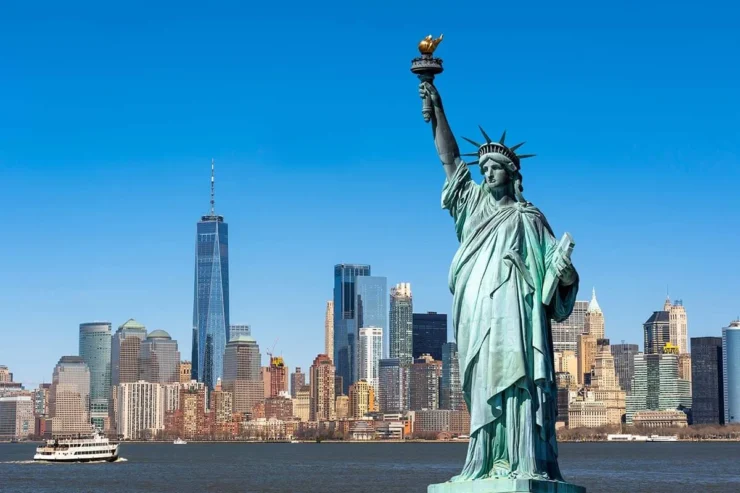
| Landmark | Description |
|---|---|
| Statue of Liberty | A symbol of freedom and one of the most recognizable landmarks in the world. |
| Empire State Building | An iconic Art Deco skyscraper that offers breathtaking views of the city. |
| Times Square | A vibrant hub of entertainment, billboards, and New Year’s Eve celebrations. |
| Central Park | A sprawling green oasis in the heart of Manhattan, perfect for strolling and picnicking. |
| Brooklyn Bridge | An architectural marvel that connects Manhattan and Brooklyn, offering stunning views of the city skyline. |
As you explore New York City’s world-class attractions, prepare to be captivated by the city’s energy and allure. From a night at the theater to a leisurely stroll through Central Park, there’s something for everyone in the city that never sleeps.
FAQ
What are some tips for moving to New York City?
Before moving to NYC, it’s important to purge unnecessary items from your current residence. Consider giving items away to friends or utilizing community groups for free finds. Make sure to check the New York Department of Sanitation’s list of items they’ll take away at curb haul.
Also, familiarize yourself with loading and unloading options in NYC buildings, and research parking regulations for moving trucks.
What is the cost of living in New York City?
The cost of living in New York City is significantly higher than the national average. Rent prices for a one-bedroom apartment average around $3,930, and housing is 369% higher than the national average.
Additional living expenses include utilities, which average around $164.72 for a 915-square-foot apartment, and transportation costs with a monthly transit pass costing $127.
What are the popular neighborhoods in New York City?
New York City is composed of five boroughs: Manhattan, Brooklyn, Queens, The Bronx, and Staten Island. Popular neighborhoods in Manhattan include Hell’s Kitchen, Murray Hill, Greenwich Village, and the Upper East Side.
Brooklyn is known for Williamsburg, DUMBO, Park Slope, and Prospect Heights. Queens has Astoria, Willets Point, and Long Island City as notable neighborhoods.
What are the top things to do in New York City?
New York City is filled with world-class attractions. Visit the Metropolitan Museum of Art, Statue of Liberty, and Ellis Island. Take a walk on the High Line and explore Central Park. Enjoy the city’s vibrant nightlife with a visit to Broadway shows, comedy clubs, and music venues.
Experience the diverse food scene and explore the city’s numerous museums and art galleries. Discover outdoor activities in New York City’s parks, including Prospect Park, Riverside Park, and Brooklyn Bridge Park.
How can I navigate New York City’s public transportation?
Public transportation is vital in NYC, with the MTA providing an extensive subway and bus system. Familiarize yourself with the subway system, which consists of eighteen lines and connects all five boroughs.
Consider getting a monthly transit pass for unlimited rides. Take advantage of other transportation options like taxis, ride-sharing services, and ferries. Driving in NYC can be challenging and parking is limited, so many residents rely solely on public transportation.
What are some tips for apartment hunting in New York City?
Apartment hunting in NYC can be competitive and expensive. Be prepared for broker fees and consider the importance of amenities when searching for an apartment.
Familiarize yourself with the different types of apartments in NYC, such as walk-ups, studios, lofts, and railroad-style apartments. Be prepared to provide extensive paperwork and deposits during the application process.
What is the job market like in New York City?
New York City has a diverse job market and a booming economy. The city is a hub for financial services, healthcare, professional and business services, retail, education, and entertainment. Consider the wide range of opportunities available in NYC when planning your move and exploring career options.
What is the climate like in New York City?
NYC experiences diverse weather conditions throughout the year. Summers are hot and humid, while winters can be snowy and windy. Temperatures can range from 28°F to 85°F. Be prepared for extreme temperatures and fluctuations in weather. Many apartments have window AC units, and heating is typically provided through steam boilers in the winter.
What are some must-visit attractions in New York City?
New York City is renowned for its world-class attractions. Explore Broadway shows, museums like the Metropolitan Museum of Art and MoMA, and iconic landmarks such as the Statue of Liberty and Empire State Building.
Enjoy the vibrant nightlife with live performances, comedy shows, and concerts. Take advantage of the city’s parks and outdoor spaces, including Central Park, the High Line, and Prospect Park.
What should I know before moving to New York City?
Moving to New York City requires careful planning and understanding of the city’s unique aspects. Consider the cost of living, explore the different neighborhoods, and familiarize yourself with public transportation options.
Embrace the diverse job market and economy, and be prepared for the varied climate and weather conditions. With the right knowledge and preparation, your move to New York City can be a smooth and exciting transition.
Conclusion
Moving to New York City can be an exciting but challenging experience. To ensure a smooth transition, it’s essential to plan ahead and familiarize yourself with the city’s unique aspects.
First, consider the cost of living in NYC and budget accordingly. The high cost of rent and other living expenses require careful financial planning.
Next, explore the different neighborhoods and boroughs of New York City. Each offers its own distinct vibe and amenities, so take the time to find the area that fits your lifestyle and preferences.
Additionally, make sure to understand the public transportation options in the city, as they are a convenient and efficient way to navigate the bustling streets of NYC.
Once you’ve settled in, don’t forget to immerse yourself in the vibrant culture and world-class attractions that NYC has to offer. From renowned museums and iconic landmarks to a bustling nightlife and diverse food scene, there is always something exciting to experience in the Big Apple.
Embrace the opportunities that the city’s diverse job market and economy present. Finally, it’s important to be prepared for the varied climate and weather conditions in New York City. From hot and humid summers to snowy winters, dress accordingly and stay informed about the forecast.
With the right knowledge and preparation, your move to New York City can be a rewarding and unforgettable journey. Welcome to the city that never sleeps!
